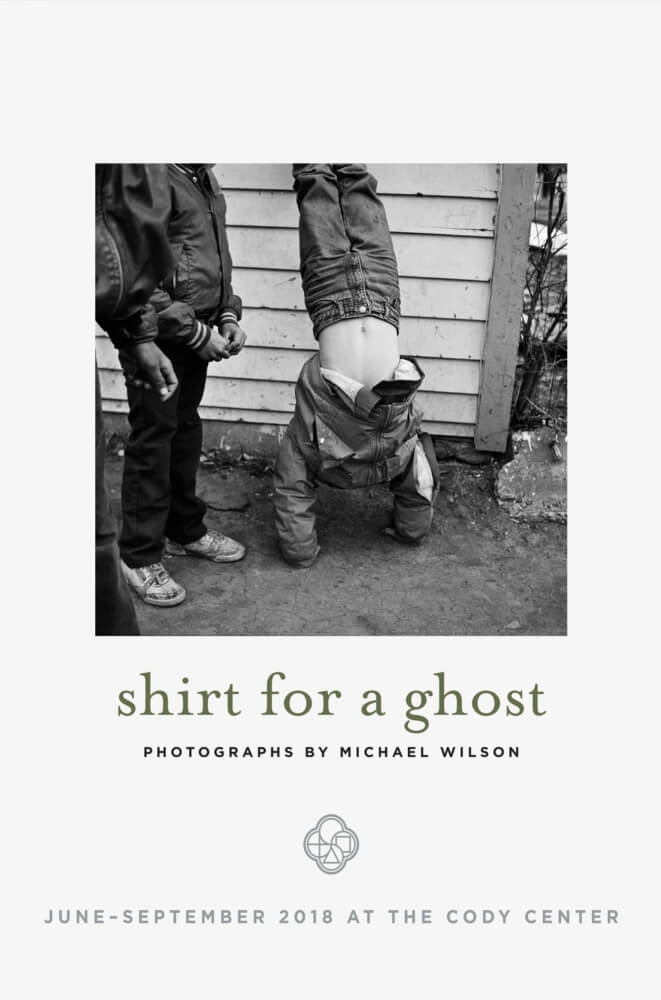
I am a photographer. I stand in front of things and hope.
Looking for pictures. Listening for voices.
This collection of pictures has come about by looking through more than thirty years of pictures. Working on these pictures has been like putting my ear to some imagined wall, listening close for voices. Pictures have very small voices. The pictures are a harvest of disparate moments—passing glances and overheard voices. It is a harvest in hopes of piecing together a kind of story from these otherwise unrelated bits, a story that gives voice to that which is beyond suspicion yet so resistant to words … a rope of pajamas and blankets to climb out of a window with.
Resident and luminous. Luminous and waning.
Many of these pictures are not about what they are of. What I’m hoping for in these pictures is a kind of mirror—make-shift and dull, perhaps, but owning that peculiar property of a mirror in reflecting back accurately that which lies in front of it. In this case, something of that which is resident and luminous in the world, but beyond that, something of the internal, invisible and intangible which drew me to stand still in the first place.
This is probably enough to say for now. I hope so. Anyway, talking about pictures is like thinking about praying.
Michael Wilson
Cincinnati, Ohio
It is tempting and sometimes comforting to regard the past as it is so often advertised: as static and unchanging. The poet William Carlos Williams proclaimed memory itself to be an accomplishment—and it would be, if in truth it required us to do all the heavy lifting, propping up the dead weight of spent time as if it were but an empty shell on the beach recalling the seductive sounds of a distant sea now lost to us all.
But we are, rather, in active and constant collaboration with the past, riding upon and fishing its waves, influencing it as it does us. We re-assign and amplify its significance and it in turn illuminates our way forward, offering context as ballast; and like musical score, decoding and unifying the flickering images to which we forever cling. Like weather around us, the past is both lashing and filling our sails, becoming what Ezra Pound said that literature must: “news that stays news.” And as such its imagery is engageable and evolving—powerful and endlessly elastic; and not as nostalgia, but in true partnership with us daily.
Images matter, I mean to say. And I have been staring at the ones made by Michael Wilson for nearly a quarter of a century now, and in them feel viscerally the weight of the past as it lays a thumb and tips the scales on all present discernments. Like the stories of dead relatives making themselves manifest in grainy family pictures, I invariably feel in Michael’s work an abiding sense of ghosts among us that not only hover but infuse inanimate objects and spent landscapes—vacant churches and dropped handbags—with the authority and residual spark of human desire; and that desire, failed or fulfilled, ultimately reveals our collective character in three dimensions. Like shadows, Michael identifies the things we cast off as speaking directly to our own changing shape and shifting perspectives.
In his portrait work, both formal and clandestine, I likewise register that the thread connecting its expanse is that we are seeing his subjects in relationship to themselves as much as in relationship to us as viewers; are bearing raw witness to personal revelation as much as public gesture and controlled proximity.
I have witnessed Michael at work—making portraits, mostly, of artists/musicians with whom I have also been aligned—and something unique always happens in that exchange wherein even typically reluctant and skittish subjects seem compelled to reciprocate the fierce attention, generosity and compassion they feel on offer from the other side of the camera—that alchemy of empathy being the unifying lens through which all of Michael Wilson’s work is focused and can be understood: every image a study in quiet hard-won dignity, and in the greater implications of its withholding.
Michael’s body of work is for me as singular and immediately identifiable as the voice of Louis Armstrong—and carries much of the same earthy radiance; yet Michael is always in collaboration—with his foreground subjects, but more than anything else, with light itself.
And thus … with time itself, since light is invariably in sweeping motion, lengthening our shadows and stretching our stories, until we know the past like extended family; like a ghost on the road ahead, pointing our way ever onward.
Joe Henry
Altadena, California
Joseph Lee Henry is an American singer-songwriter, guitarist, and producer. He has released over a dozen albums and produced multiple recordings for artists such as Joan Baez, Ani DiFranco, Aimee Mann, Mary Gauthier, Loudon Wainwright III, Aaron Neville, Hugh Laurie, Bonnie Raitt, Billy Bragg, and Over the Rhine, including three Grammy Award-winning records.
“I’ve always aspired to music…I want my pictures to look like certain music sounds.”
This comment, from our conversation with photographer Michael Wilson, got us wondering: what would the photographs that make up the current Cody Center Exhibition, Shirt for a Ghost, sound like? In response, Michael curated a playlist for us–a sort of auditory companion to the exhibition. Music, trying to sound like certain pictures look.